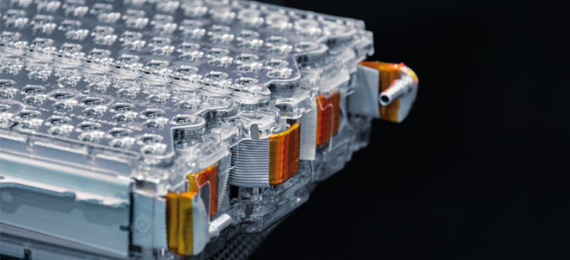
Electric vehicles don’t use a single battery like our normal mobile devices. Instead, they use a pack of batteries which is composed of thousands of individual Li-ion batteries or cells working together. When the car gets charged, the electricity will make numerous chemical changes inside the batteries. When the car is on the road these changes get reversed to produce electricity.
Lithium-Ion Battery for Electric Vehicle
Nowadays in most of the electric vehicles, a lithium-ion battery is used. The Li-ion battery is a type of rechargeable battery that is mainly used for electric vehicles and many portable devices like mobile phones, laptops, and other devices. Lithium-ion batteries have a higher energy density when compared to other batteries like lead-acid or nickel-cadmium rechargeable batteries. In this way, the battery manufacturers can save many spaces and reduce the overall size of the battery. These lithium-ion batteries contain no lithium metal, and they actually contain ions. Hence, these batteries are safer than many other alternatives.
How Long Does an Electric Car Battery Last?
- A. 10 Years
- B. 15 Years
- C. 20 Years
- D. 25 Years
Why You Should Choose Lithium-Ion Batteries for Electric Cars?
- These lithium-ion batteries almost double the autonomy of your electric car.
- These batteries can extend your electric car lifespan up to 20 years, that is they can last up to 2000 cycles which are higher when compared to other batteries.
- These rechargeable car batteries can be recharged in 1.5 hours (100%) and they can also be partially recharged.
- When compared to other electric car battery technology this li-ion battery is much lighter and has greater effective capacity.
- The lithium-ion batteries for electric cars have a separate winter pre-heating function so it can work even in sub-zero temperatures.
How a Lithium-Ion Battery and Motor Work Together?
The lithium-ion battery connects one or more electric motors, which helps to drive the wheels. When the accelerator pedal of the car is pressed, it instantly feeds power to the electric motor which gradually uses the energy stored in the battery and this regenerative braking system recovers the energy and will store it in the battery again and again to improve the car’s range.